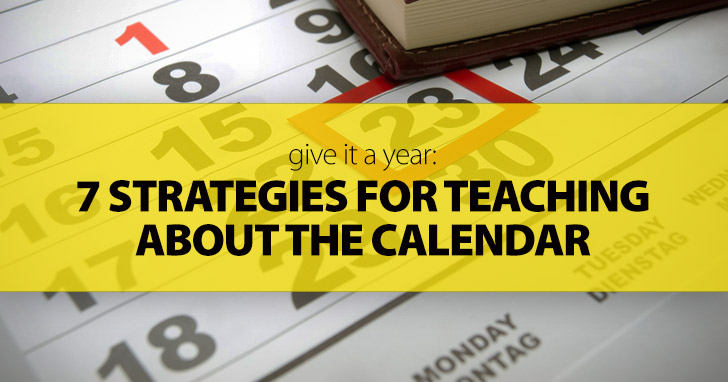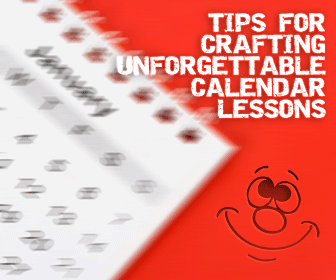Give It a Year: 7 Strategies for Teaching about the Calendar


There is a lot of information to absorb and to apply, so the more creatively and concretely you can present the lessons, the better. Follow these tips for crafting calendar lessons and your students will never confuse January with June again!

The first thing to do when thinking about a calendar lesson plan is to determine the best way to introduce all the vocabulary systematically. This can often be a stumbling block for students with pronunciation and retention. It’s easiest to start with the days of the week. You’ll want to first test student’s knowledge level asking questions like, What is the first day of the week? What days are on the weekend? Chances are students know a few of the days of the week, if not most of them. You can then practice spelling, ordering, and pronunciation. A fun way to practice this is to give them a puzzle of the days of the week and see how quickly they can put it together. After they have it assembled you can then have them fill in some blanks or ask questions practicing things like, Tuesday is three days before _________/Friday is the ____day of the week/__________ is the day before Friday. Come up with lots of these and then have the students join in by trying to stump their classmates.
Once they have mastered the days of the week, you can then move to introducing the twelve months of the year. A fun way to begin with the months is to write them up on the board as scrambled words. Have the students work out the correct spelling as well as the correct order of the months. You may also want to briefly discuss seasons here and how the months shake out with however many seasons there are in the country where you are living. Then you could do a similar activity to the above fill in the blank, but with months, for example:
Christmas is in ______________/June follows _____________/_____________ is three months before May/etc. You can get creative with these fill in the blank exercises and use humor to make them memorable. This tends to be much more interesting than What is the first/second/third month of the year.
Another way to test out comprehension for pronunciation and spelling is to list all the months of the year on the board in random order. Line the students up in two teams or lines by the board. The two students at the front of the line will go head to head. You say a month and the first one to circle the right month gets a point for their team.
Another way to practice months of the year is to do various kinds of question and answer activities. The more entertaining you can make the rounds, the more memorable the subject matter will be for students. A fun warm up is to shout out questions like What is the 10th month?/Does January follow April?/What is the seventh month? Create competitive play and get students to ask the questions as well as shout answers back or raise their hands. This is a good time to work on pronunciation while providing a much-needed comprehension check. If students are slow to answer or need their notes, it may be time to do some review before progressing.
From this warm-up you can go into other question rounds or surveys. If you haven’t already done so, ask the students to find out all their classmates’ birthdays by doing a mingling activity. The trick is to turn it into a guessing game because the students aren’t allowed to ask simply, when is your birthday? They must ask questions to determine the month and then the day. This may take some time depending on the number of students you have and it could also get a little noisy. Once they have discovered everyone’s birthdays, tell them they must then line up in order of birthday from oldest to youngest. Then you can have them switch around, youngest to oldest, furthest birthday to nearest birthday, etc. This is a very memorable activity that will have the students speaking and laughing a lot.
One last questioning game you could play for months of the year is 20 questions. One student chooses a card with a month on it and the students have to ask yes/no questions to guess which month is on the card. You could also play variations on this and add in holidays.
Provide each student with some blank calendar pages and get creative with what you can do with them. Inform them that as a class they need to create a complete twelve month calendar. You could number off the students and have them fill in the calendar pages according to the number you gave them. You could also get crafty here and have them decorate their month or months (depending on the number of students that you have), with either colored pencils, markers, or even magazine pictures for something of a collage. This can be accompanied by discussing what holidays happen during what months and in what countries. If you have a multi-cultural class, you could include a lot more holidays and discuss when they are celebrated. This might be challenging if the students don’t have the language skills to express the holidays in English. It would really depend on the level.
The information students are learning is so necessary that any way to craft more memorable lessons will be a breath of fresh air.